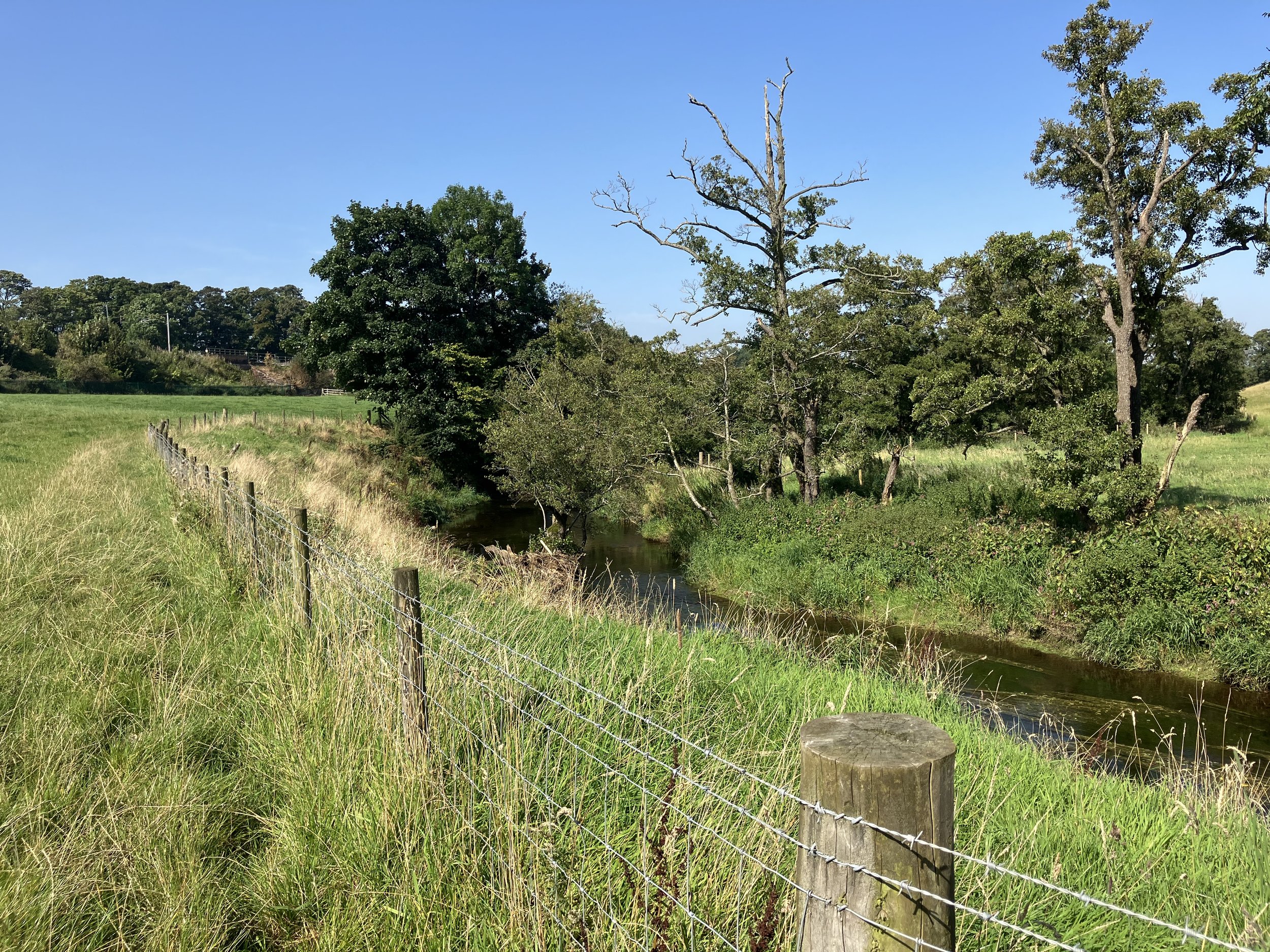Creating buffers, reducing run-off and boosting biodiversity on a dairy farm
River Petteril, High Oaks Farm, Cumbria
High Oaks Farm is a family dairy farm in Cumbria, milking 350 dairy cows across 127ha within the catchment of the River Petteril. The farm sought to significantly reduce dirty water, phosphate, and sediment runoff into the River Petteril, while simultaneously upgrading the farm infrastructure and improving farm management practices. By accessing a blend of private and public funding schemes, High Oaks Farm was able to make space for water on the farm, boosting biodiversity while maintaining food production.
Working with nature to reduce nutrient pollution
Between 2016 and 2022, ‘grey’ solutions, such as concreting dirty yards and fencing off watercourses, were installed alongside nature-based solutions, including earth bunding and the creation of two sediment ponds. 1700m of buffer strips were created alongside the river, creating new wildlife habitats and connecting up existing habitats. Ponds within the river buffer strip also store water during high flows, helping to reduce flooding on adjacent farmland and further downstream.
River buffer and exclusion fencing protecting the River Petteril, on High Oaks Farm
Species recovering across the catchment
This combination of interventions helped contribute to the 63% reduction in phosphorus seen in the catchment as part of a wider trial. The improvement in water quality has led to an increase in biodiversity and ecosystem functioning along the Petteril – populations of trout, grey heron and white water-crowfoot, have increased following the reduction in nutrient loading.
The farm accessed a blend of private and public funding, and this work was undertaken as part of United Utilities’ Catchment Nutrient Balancing trial, delivered by Eden Rivers Trust with Catchment Sensitive Farming.
The upgrades in farm infrastructure delivered through this project have allowed previously unsuitable pasture to be used as rotational grazing land for the milking herd. This provides an additional benefit to the farm business, as it can better utilise its existing resources and reduce reliance on imported feedstuffs, while rotational grazing improves water infiltration, limits surface runoff, and boosts soil biodiversity.
““The damage to land, livestock, and livelihoods is only going to increase as extreme weather gets more frequent and severe. By moving our cows, farming away from the riverbanks and creating space for rivers to move, we have improved our flood resilience, created new wildlife corridors and connected existing habitats. We’ve done this while maintaining dairy production and getting fairly supported for it, but farmers need more funding options to help pay for work like this.”
”

